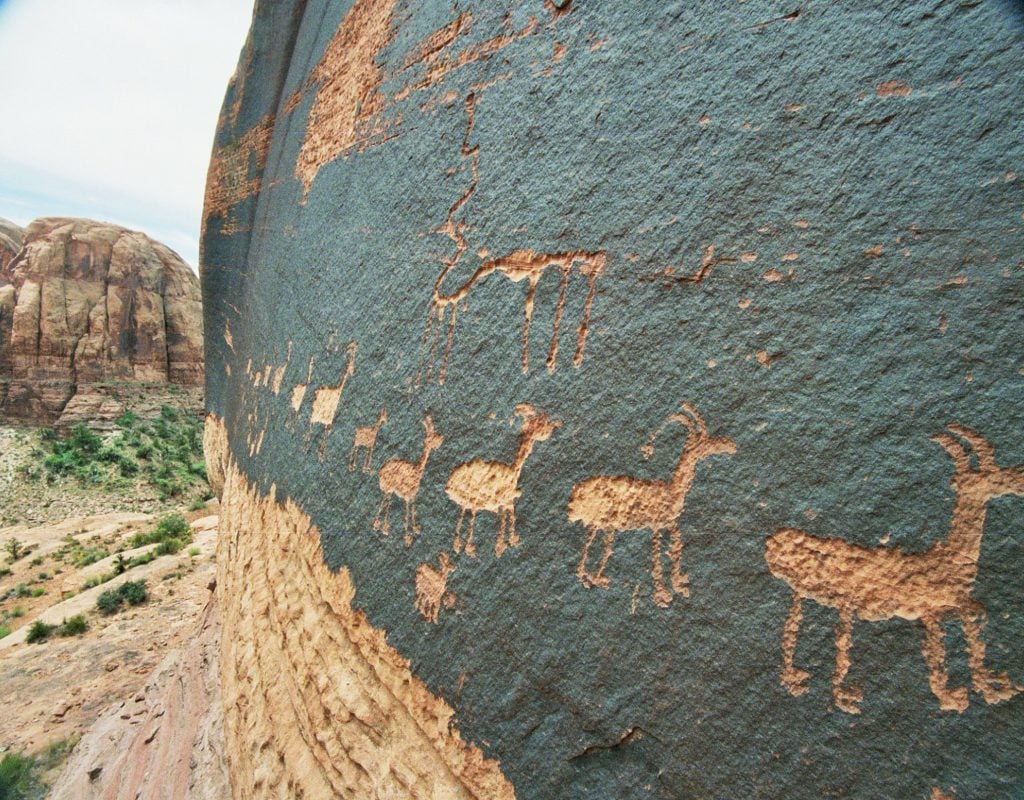Art World
Trump’s Assault on Bears Ears National Monument Could Threaten Ancient Native American Petroglyphs
Experts warn the 2,000-year-old rock carvings could be lost forever.

Experts warn the 2,000-year-old rock carvings could be lost forever.

Henri Neuendorf

Conservation experts have expressed concern over the preservation of ancient artworks at Bears Ears National Monument in Utah after President Trump announced measures to reduce the size of the monument by 85 percent on Monday. Together with the rollback of the nearby Grand Staircase-Escalante National Monument, the reduction represents the largest decrease of federal land protection in US history and could threaten the area’s ancient Native American petroglyphs.
President Barack Obama, who established the protection of the land a year ago, said the designation was introduced to safeguard “important cultural treasures, including abundant rock art, archaeological sites, and lands considered sacred by Native American tribes.” According to the Washington Post, Bears Ears was the sole monument designated as the result of a petition by a coalition of four Native American tribes (Navajo, Hopi, Zuni, and Ute).
Native American tribes and experts such as David S. Whitley, a specialist in prehistoric archaeology and ethnography of far western North America at the environmental protection non-profit ASM Affiliates, are concerned that the government’s decision could put at risk ancient petroglyphs—some dating back 2,000 years. They also warn that opening up the area to mining and oil development could destroy the surrounding environment.
“Bears Ears has a world-class corpus of Native American rock paintings and engravings. Some of these are thousands of years old; others more recent; all, by their very nature, are extremely fragile,” Whitley told artnet News in an email. “Roads, well pads, and open pit mines will obliterate the sites; pollution generated by these activities will quickly degrade the remainder. America has very sadly traded our heritage for short-term corporate profits.”
Some proponents of Trump’s move have argued that the initial protective measures amounted to federal overreach and called for the issue to be settled at the state level. Many of the counties surrounding the national monuments suffer from high unemployment and some locals have suggested that the decision to preserve the land has diminished job opportunities.
According to the New York Times, the Trump administration’s rollback is expected to ignite a legal battle, which could set a significant precedent for the remaining 25 national monuments still under review. In April, President Trump ordered Secretary of the Interior Ryan Zinke to review the boundaries of 27 national monuments. Zinke’s report, which was published in August, recommended the alteration of several existing sites.